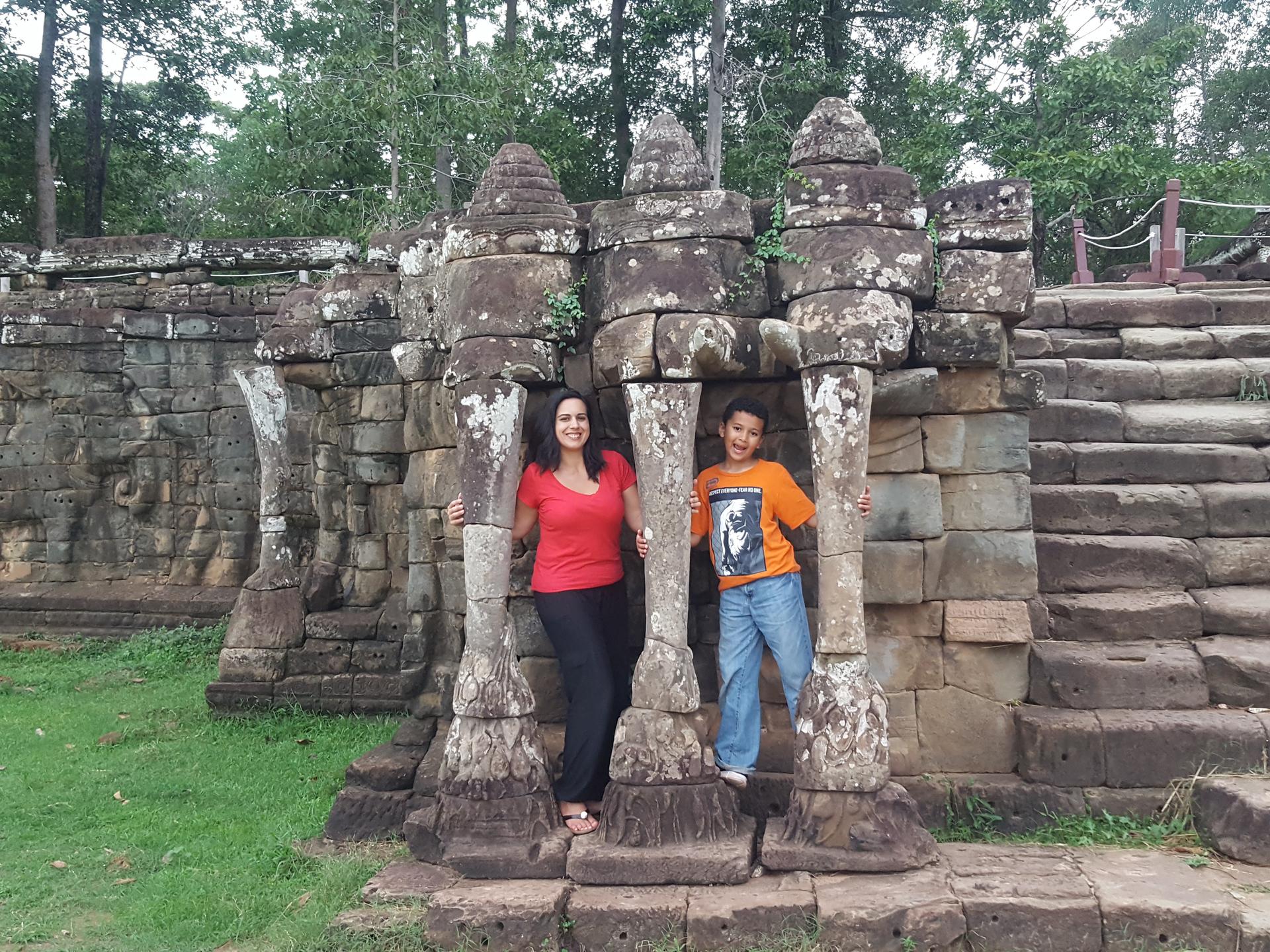Table Of Content
- Andi Stanfield’s Journey From Teacher to Instructional Designer
- MEET JILL DAVIDIAN, COACH AND MENTOR TO NEW INSTRUCTIONAL DESIGNERS
- Struggling with perfection paralysis?The Do It Messy Mentality helps youbreak free and build momentum.
- Applying Instructional Design Principles in Real-World Projects
- Inside the world’s first and only authorized virtual vocational school for corporate IDOLs…
Some students do land jobs much faster, anywhere from a few weeks up to 5 months after joining, due to their own initiative in applying to positions before completing the skill training. It takes about 6 months to complete the skill training, intern with a client, build a quality portfolio, and refine your job application assets (like a resume and LinkedIn profile). Then we anticipate another 1-2 months to go through the hiring process. Once the data is collected, it needs to be analyzed and interpreted to draw meaningful conclusions.
Andi Stanfield’s Journey From Teacher to Instructional Designer
To conquer these hiring convos with confidence, watch in-depth training that covers everything from how to prepare and what to wear to post-interview follow-up. Practice via mock interviews and with interview assessments used by real companies. And learn a simple strategy for showcasing your expertise even when interviewers throw you a curve ball question. After graduation, you’ll advance into the career coaching component of the program, where you’ll learn how to stand out in the job market. When crafting learning objectives, it is important to use action verbs that clearly describe the desired behavior. Verbs such as “analyze,” “synthesize,” “create,” and “evaluate” indicate higher-order thinking skills, while verbs like “identify,” “define,” and “describe” indicate lower-order skills.
MEET JILL DAVIDIAN, COACH AND MENTOR TO NEW INSTRUCTIONAL DESIGNERS

The Applied Instructional Design Academy offers a comprehensive program that empowers learners to become skilled instructional designers. With a curriculum designed by industry experts, hands-on learning opportunities, and a focus on real-world applications, our academy provides a solid foundation for success in the field of instructional design. Organizations are increasingly recognizing the value of providing learning online or via a learning management system (LMS) — especially when supporting remote or hybrid workforces. You’ll also learn techniques to help you address the inevitable challenges brought on by organizational and industry demands.L&D professionals must also keep pace with industry advancements. Our comprehensive curriculum is infused with discussions that focus on instructional design developments, methodologies, and new technologies to help keep you and your skills on the cutting edge.
Struggling with perfection paralysis?The Do It Messy Mentality helps youbreak free and build momentum.
After you apply, the financial aid office will determine your financial need and inform you of the federal or private loans that are available to you. The USC Office of Student Financial Aid provides information regarding various types of financial aid and financing options. I will be honest (you will see what I don't sugarcoat things!) This program does not focus on getting a job in the K-12 or higher-ed environment, so if that is your focus, this is not the program for you. I was just reflecting on how 2020 went for me. I have had quite a year going from having no clients for freelance at the start of the year to having more than I can handle by the end of the year.
Grad school is amazing to really dive into the theory, with a bit of practical application, but unfortunately, it doesn't REALLY teach you how to do Instructional Design and eLearning Development in the real world. This program is the BRIDGE between grad school and the real world, and it's so critical to breaking into the market. Like most, my grad program didn't prepare me for the corporate world. They left out development and made no mention of the different modalities.
Gathering Data
If you need more flexible payment options, you can finance your tuition over (up to) 24 months through Climb Credit, a third-party financing provider. To keep pace with the 24-week curriculum, we recommend you dedicate about 10 hours per week to completing lessons and assignments. This client company was such a good fit that they offered me a full-time role, which I've enjoyed for nearly a year now. The best IDOLs are continual iterators, not perfectionists. In the Academy, you’ll follow a process that encourages quick decisions in the spirit of experimentation. For designing professional-looking graphics, GIFs, slides, videos, and more.
School of Law: Tamara Tabo - University of Dayton - News Home
School of Law: Tamara Tabo.
Posted: Wed, 07 Jun 2017 22:52:25 GMT [source]
Wondering exactly how IDOL Academy stacks up against university programs and online courses? The short answer:
Engage in open and transparent communication with stakeholders to gather their perspectives, suggestions, and insights. By involving stakeholders in the evaluation and improvement process, you foster a collaborative and inclusive approach to instructional design, ensuring that the materials meet the needs and expectations of all stakeholders. Creating multimedia content requires careful planning and attention to detail. Ensure that the media elements are of high quality and relevant to the content.
Successful Implementation of High-Quality Instructional Materials - Center For American Progress
Successful Implementation of High-Quality Instructional Materials.
Posted: Fri, 20 Sep 2019 07:00:00 GMT [source]
Vocational status also means you have the opportunity to earn an industry certification upon graduation. And because we’ve built a reputation as the “gold standard” for corporate instructional design training, our certification is the credential that companies look for. Thanks to this (mostly) self-paced format, most students can complete the skill development track within 6 months, even while balancing full-time jobs and being parents.
Priceless encouragement and support with imposter syndrome
The average member spends a minimum of 7 hours a week, but some spend more and some less. I work with people like you who are looking to transition to Instructional Design and eventually want a REMOTE career, but don't know where to start or how to gain that real-world knowledge. You gain confidence in interviews where you can speak to what actually happens in real life. Mentors are working (full-time and contract) Instructional Designers hand-picked by the founder to coach, guide, and provide feedback for students in Applied Instructional Design Academy.

We are extremely passionate about lifelong learning and started this company to help others grow and uplevel in their own careers, whether transitioning to Instructional Design or going through a learning experience at their organization. We provide shared use of all the industry-standard tools we use in the program. You get access to Articulate Storyline & Rise (a $1099 VALUE!) while you’re active in the program. You’ll create assets in these tools for your portfolio that you can take with you after you complete the program. You should expect to spend a minimum of 10 hours a week on the content, which will get you through the credential in 8 months or so, with time to look for jobs while we support you in that process. The quickest would be about 4 months if you were working on AIDA for about 30 hours a week.
I'm also a single mom of a 14 year old son and I am also a caregiver to my elderly mother. This career has allowed me to pay off over $80k of debt, support both my son and my mother without worry, travel internationally 2-3 months a year, take care of my mom when she was going through cancer, and so much more. I get teary eyed thinking about how my life would have been so different had I not found this career.
Formative assessment occurs during the learning process and is used to monitor learners’ progress and provide feedback that informs instruction. It can take the form of quizzes, class discussions, or informal observations. Summative assessment, on the other hand, takes place at the end of a learning unit or course and is used to evaluate learners’ overall understanding and achievement of learning objectives. Examples of summative assessments include exams, projects, or portfolios. Instructional strategies play a crucial role in creating engaging instructional materials.
In this session, we will dive into the process of crafting clear and measurable learning objectives. Learning objectives are essential for guiding the design and development of instructional materials. They provide a roadmap for both the instructional designer and the learners, ensuring that everyone is clear about what should be achieved through the learning experience. During your cohort, you’ll learn the instructional design skills you need to develop corporate learning projects from start to finish. You’ll also complete an internship (with the support of your mentor) to gain the hands-on experience you can put on your resume and LinkedIn profile. In the final session, you will have the opportunity to apply your newly acquired knowledge and skills to real-world projects.

No comments:
Post a Comment